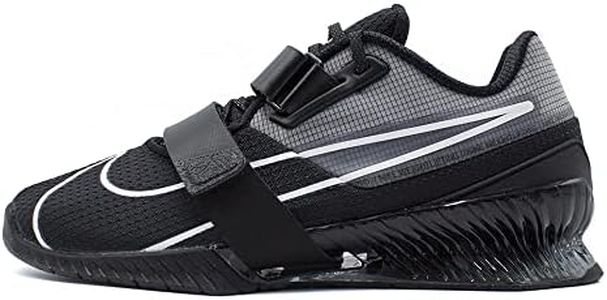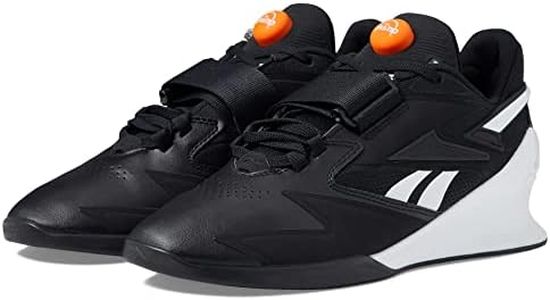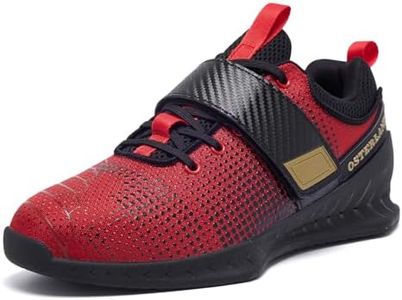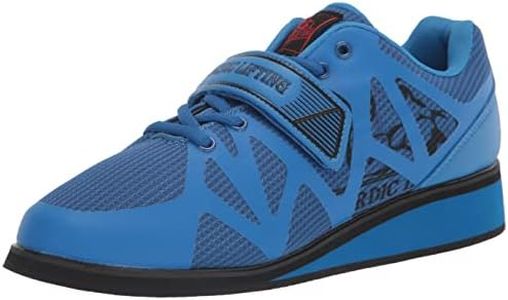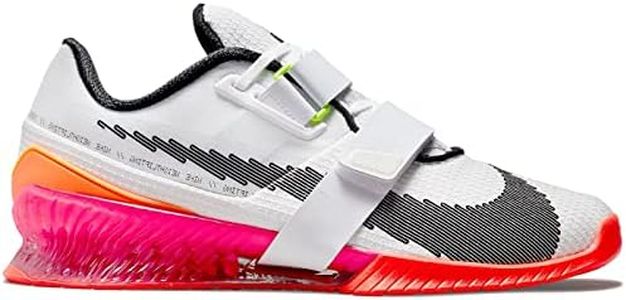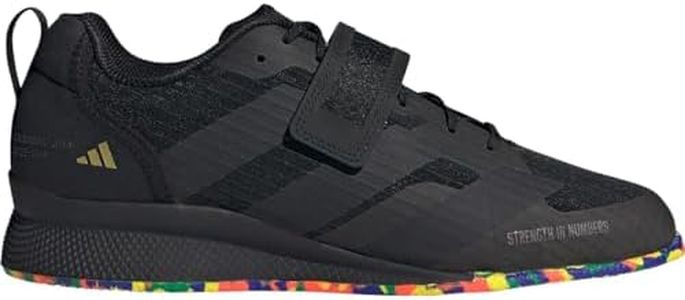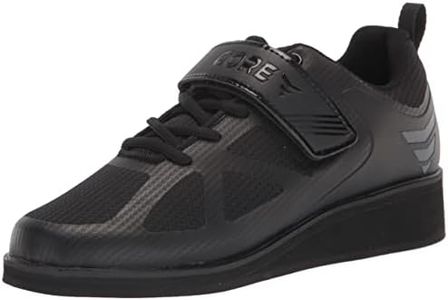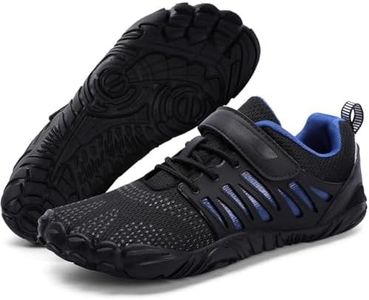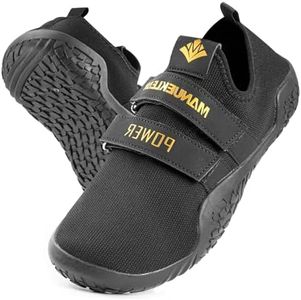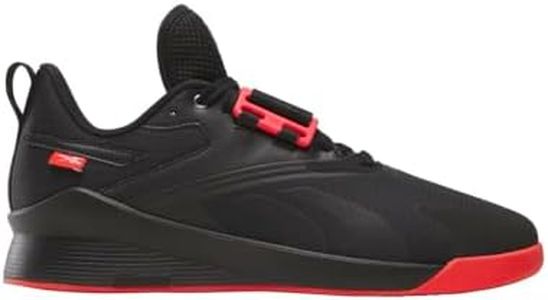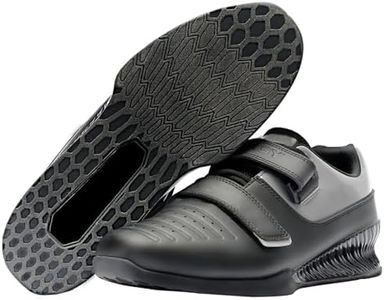We Use CookiesWe use cookies to enhance the security, performance,
functionality and for analytical and promotional activities. By continuing to browse this site you
are agreeing to our privacy policy
10 Best Weightlifting Shoes
From leading brands and best sellers available on the web.By clicking on a link to a third party's website, log data is shared with that third party.
Buying Guide for the Best Weightlifting Shoes
Choosing the right weightlifting shoes is crucial for both safety and performance during your workouts. The right shoes help stabilize your feet, improve your lifting posture, and allow you to generate more power from the ground up. Thinking carefully about your needs, body type, and lifting style will help you find shoes that keep you comfortable and confident in every session.Heel HeightHeel height refers to the elevation of the heel compared to the forefoot in the shoe. This spec is important because a raised heel can improve your squat depth and help maintain a more upright posture, especially beneficial for movements like squats and Olympic lifts. Lower heel heights, often around 0.5 inches, offer less assistance with depth and posture but may feel more natural for beginners or those with good ankle flexibility. Medium heel heights, roughly 0.6 to 0.75 inches, strike a balance that suits most recreational and intermediate lifters. Taller heels, up to 1 inch or slightly more, are favored by experienced lifters or those needing more help staying upright (for example, people with limited ankle mobility). Select the heel height based on your flexibility, preferred lifts, and what feels stable for your movement.
Outsole Material and GripThe outsole is the bottom of the shoe that touches the floor, and its material and grip are essential for stability during heavy lifts. Most good weightlifting shoes have hard, non-compressible rubber outsoles to stop your feet from sinking or slipping. Very smooth or slippery bottoms can be unsafe, while outsoles with grippy texturing keep you planted securely on the platform. If you lift on wood or smooth gym flooring, prioritize shoes with excellent grip. Choose a shoe with a firm, flat outsole for maximum energy transfer and safety.
Strap and Lacing SystemThe strap and lacing system keeps your foot locked in place, preventing any unwanted movement inside the shoe during lifts. Some shoes use just laces, while others have one or two straps over the midfoot, and a few combine both for extra security. More straps mean a tighter, more customized fit, which is great if you like feeling locked in. If you prefer convenience or have a high foot arch, consider shoes with adjustable straps that don’t pinch. Your choice should match how snug and supported you like your feet to feel during big lifts.
Upper MaterialThe upper material is the part of the shoe that wraps around your foot. Its durability and breathability affect how comfortable the shoe feels, especially during longer sessions. Synthetic leather or fabric uppers are common; synthetic leather is stiffer and durable, while mesh or fabric is often lighter and more breathable. For maximum longevity, look for shoes with reinforced or double-stitched uppers. If your feet sweat a lot or you train in hot conditions, breathable mesh panels are more comfortable, while tougher materials will suit those looking for a shoe to last years of hard training.
Weight of the ShoeThe weight of a weightlifting shoe can impact how agile or grounded you feel. Heavier shoes (with sturdy heels and thick materials) provide a stable foundation and are especially good for static lifts like squats or deadlifts. Lighter shoes may feel more comfortable for moves that combine lifting with agility, such as CrossFit workouts that include jumping or running. Consider what types of exercises you’ll do most; if you mostly do slow, heavy lifts, a heavier shoe is usually better, while lighter shoes can work if your training includes more dynamic movements.
Fit and Toe Box WidthFit refers to how snugly the shoe wraps around your foot, and the toe box width is specifically how much room your toes have to spread out. A good fit keeps your foot secure, but a toe box that’s too tight can cause discomfort or numbness during lifts. Narrow toe boxes may help some people feel more supported, while wider ones let your toes splay naturally, improving balance and comfort. Choose a shoe that matches the natural width of your foot and provides enough room to stay stable without squeezing or pinching.
